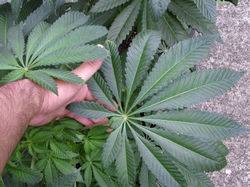Tripco
Active member
Heh, i forgot i already got it on my website (with some pages from Edge Forums). Here it is:
www.geocities.com/loroan/AK47.htm
It is a 13th post from the top (Koston's). And it's a transcript from the High Times article from '87. Nevil went there in '85.
www.geocities.com/loroan/AK47.htm
It is a 13th post from the top (Koston's). And it's a transcript from the High Times article from '87. Nevil went there in '85.






 ??? this means very little, cause each plant is so different in genotype and result. (...they call it racialization)!
??? this means very little, cause each plant is so different in genotype and result. (...they call it racialization)! 

